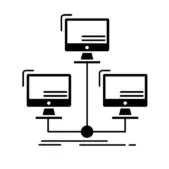With real-time navigation, voice assistants, and predictive routing at our fingertips, the idea of unfolding a paper map seems quaint. Yet when it comes to designing a seamless customer journey, mapping remains one of the most powerful tools we have.
In this article, we’ll introduce you to customer journey mapping, a strategic practice that helps businesses visualize and improve every interaction customers have with their brand, both online and offline.

What Is Customer Journey Mapping?
A customer journey map is a visual representation of every touchpoint a customer experiences with your product, service, or brand. It captures not just what customers are doing, but also what they’re thinking and feeling at each step.
A well-structured journey map helps answer critical questions:
- Where are customers getting stuck or dropping off?
- What emotions or expectations do they bring into each interaction?
- How do their needs change as they move from awareness to conversion and beyond?
Why Mapping Still Matters (Now More Than Ever)
Today’s customer journeys are non-linear, cross-platform, and data-rich. Mapping gives you the ability to:
- Identify friction points that hurt engagement, trust, or conversion.
- Spot opportunities to add delight or personalization.
- Align internal teams (product, design, marketing, support) around a shared understanding of the customer.
Modern journey maps often include:
- Touchpoints across mobile apps, websites, customer support, physical stores, email, and social media.
- Emotional curves that track how a customer’s satisfaction changes throughout their journey.
- Metrics overlays, like task success rates, conversion rates, and CSAT/NPS scores.
When to Map
Customer journey mapping is useful in many contexts:
- Post-launch audits help identify what’s working and what’s not in an existing experience.
- New product planning uses journey maps to guide early decisions based on user research, competitive analysis, and behavioral data.
- Cross-channel service design ensures consistency across digital and physical channels.
For example, if you’re designing a mobile app for transit ticketing, start by mapping the current user journey. How do people buy tickets today? What frustrations do they face? Field research, such as shadowing commuters, can uncover unmet needs and habitual behaviors that surveys often miss.
Tools and Techniques
Unlike the hand-drawn maps of the past, today’s journey maps are dynamic and collaborative. Popular tools include:
- Miro for remote collaboration and stakeholder workshops
- UXPressia for journey and persona mapping with data integrations
- Smaply for service blueprints and visualizations
You can also enhance your maps with tools like Hotjar, FullStory, or Google Analytics to ground insights in real user behavior.
Inspiration from the Field
Adaptive Path’s experience map of the European Rail System remains a landmark example of journey mapping. It illustrates how customer insights can shape service improvements on a large scale. Today, companies across healthcare, finance, education, and more use journey maps to uncover pain points and guide decisions.
Key Takeaways
- Journey mapping is a foundational practice for improving customer experience.
- It’s most effective when grounded in research and supported by behavior data.
- Use it not just to fix problems, but to design moments of delight into every phase of the customer experience.
Mapping may have changed with the times — but its value in revealing customer needs and guiding better design is as strong as ever.


